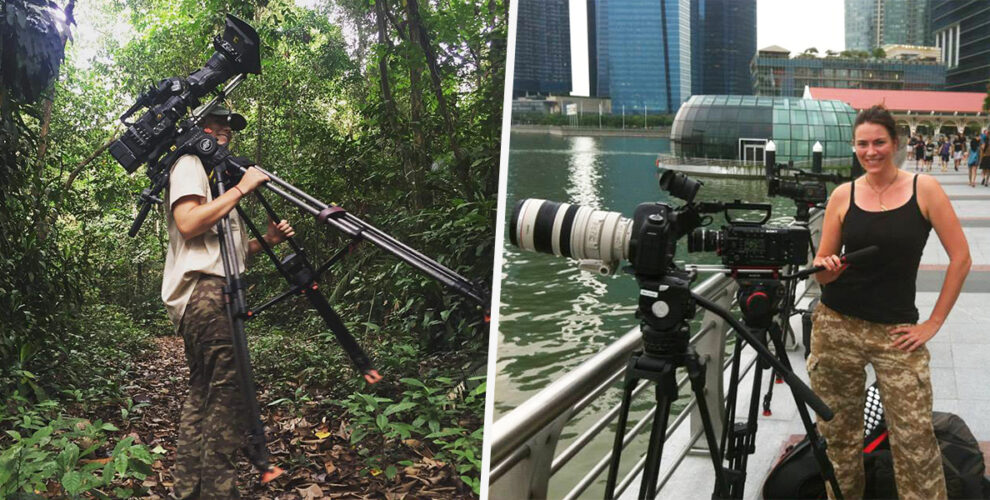Wild City — Behind The Documentary With Its Female Filmmaker
There’s nothing quite as calming and insightful as watching National Geographic documentaries and witnessing scenes of lions hunting down zebras up close on screen. But when it comes to animal documentaries in our own Little Red Dot, the first question that comes to mind is “got meh?”
While the biggest animal drama we’re familiar with of recent times was the turf war between the Marina and Bishan otter gangs, Australian filmmaker Claire Clements proves to us that there’s so much more to wildlife in Singapore than we think. Pioneering Singapore’s natural history wildlife documentary scene, Claire produced a series called Wild City and was involved in every aspect of her documentaries — from shooting to producing and directing.
After discovering 2 Wild City episodes on Netflix, I decided to reach out to Claire, who’s currently back in Australia, for an interview. In spite of different time zones and being separated through a screen, Claire shared with me the ups and downs of her journey and how she found a place for herself to shine amidst a male-dominated media industry.
Embarking on her journey as a filmmaker in Singapore
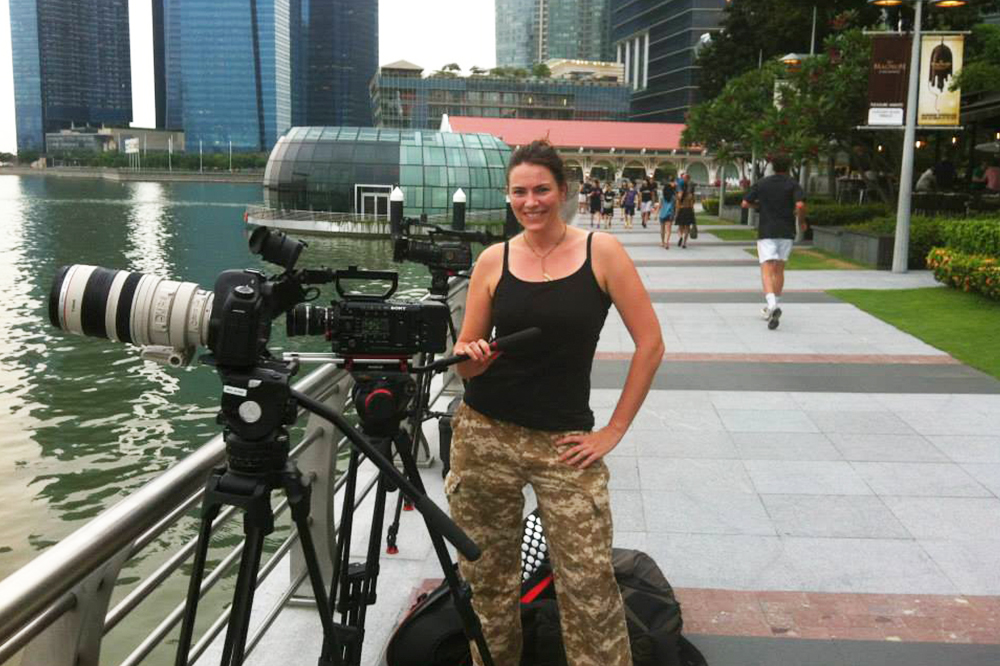
Image courtesy of Claire Clements
Though she’s currently back in Australia for now, Claire spent 9 years on and off in Singapore creating documentaries. During that time, she also travelled to other places across the world like China, the UK, U.S. and New Zealand — something that we all wish we could be doing again in this pandemic.
Claire initially moved to Singapore for a short 6-month contract in 2015 — “during Singapore’s 50th”, she fondly remembers, to help film wildlife in the zoo. There were no intentions to shoot a documentary originally. Like what most of us would assume ourselves, she initially felt that “there weren’t enough stories about wildlife to be able to produce a proper documentary.”
But as the saying goes, sometimes the best things in life are unplanned. While Claire was in Singapore, the government was looking to expand its locally-produced content. “So we pitched a 2-hour wildlife documentary and everyone was excited and going like ‘oh my god, we have to make it’”, she mentions. The show was quickly approved and also funded by the government.
“Initially we just made 2 Wild Cities and I came on board as a director. I kind of progressed [to take on more roles], since I was trained in camera work and had a masters in Natural History Filmmaking, so I started picking up the camera more too.”
Making Wild City
The first 2 episodes of Wild City were just based on “whatever wildlife” that Claire could find in Singapore, even diving into the depths of the waters to explore underwater wildlife. But over time, Claire says she “fell in love with Singapore’s unique landscape while working on the series.”
Buildings like Gardens By The Bay were designed to bring the wild back into the city, something that she describes as truly “revolutionary”. Her initial assumptions were proven wrong, as she gradually discovered wildlife stories in Singapore that she had “never come across before”. This not only led to more and more additions to the Wild City series, but Claire’s unexpected stay in Singapore as well.
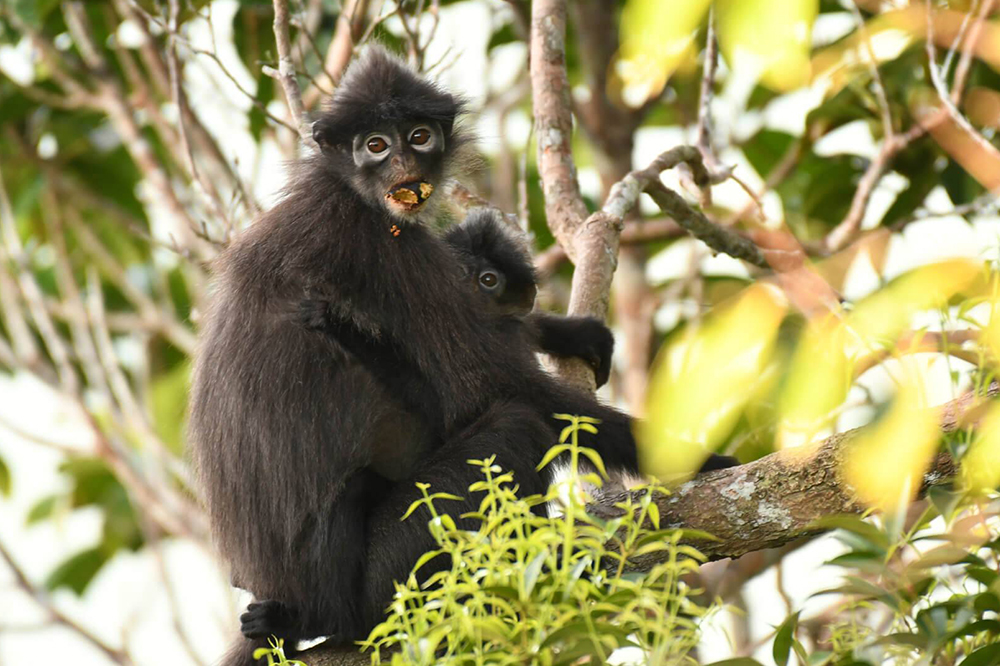
Claire’s favourite animal: the Raffles Banded Langurs
Source
Claire mentioned that Forest Life was her favourite episode because she captured the Raffles Banded Langurs — a critically endangered monkey that can only be found between Singapore and Malaysia. On top of that, she also managed to film more wildlife that cannot be easily seen in Singapore, such as the Greater Mouse-deer.
She also hilariously shared that her own mother had watched the series in Australia and didn’t even realise it was filmed by her. Amidst her mother’s confusion and telling her “I watched a film about Singapore’s wildlife recently”, Claire questioned back, “I think I made that one?”
“Sometimes, tourists would [also] come up to us [while we’re filming] and say ‘we saw this wildlife documentary!’. It’s really cool. Even the taxi uncles seem to know about Wild City as well.”
Facing stereotypes in a male-dominated industry
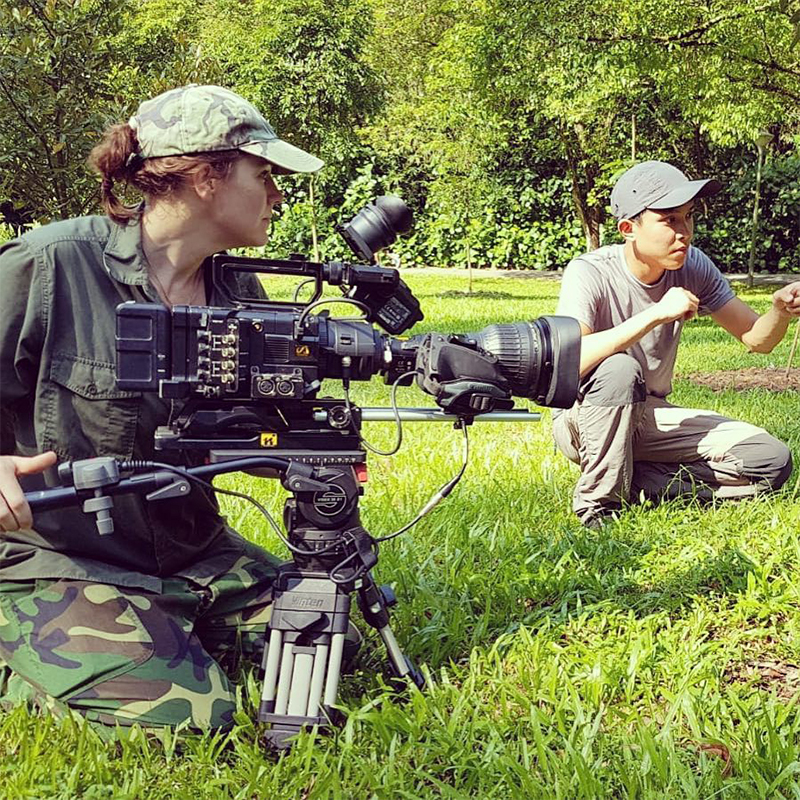
Image courtesy of Claire Clements
While there are directors and filmmakers in the media industry, it’s not common to find someone who can rock both roles. Claire considers herself lucky that the production company she worked with in Singapore allowed her to dabble in both positions while supporting her throughout it all.
Though she loves the storytelling and camerawork, Claire admits that it’s “a bit unusual to find a female camera operator” in such a male-dominated industry. Despite the stereotypes, she’s currently working with a majority-female camera crew.
Put me in a room full of men and I won’t deny that a tinge of intimidation washes over me. Not for Claire though. In fact, the tables have turned for her. She joked that at one point during filming there were around four female camera operators but only one male, so she approached him to ask “are you feeling okay?”, much to his surprise.
Though we’re progressing as a society, it’s a sad fact that gender stereotypes against women still exist in the workplace. Especially for such a physically tiring job as a camerawoman, where a lot of strength is required to carry all the equipment.
Undeterred, Claire feels that “you can take it as a judgement or you can take it as a compliment. Embrace that we [as women] are different and yes, we can do a male’s job too while remaining cool and strong.”
Till today, Claire still receives looks of surprise when she shows up to the office in her camo wear. She doesn’t get too hung up on negative presumptions though, because the best thing one can do is to “go out and prove yourself.”
“Once you’ll be able to prove your worth, people will recognise and acknowledge your skill set”, Claire says.
Key elements to making a successful documentary
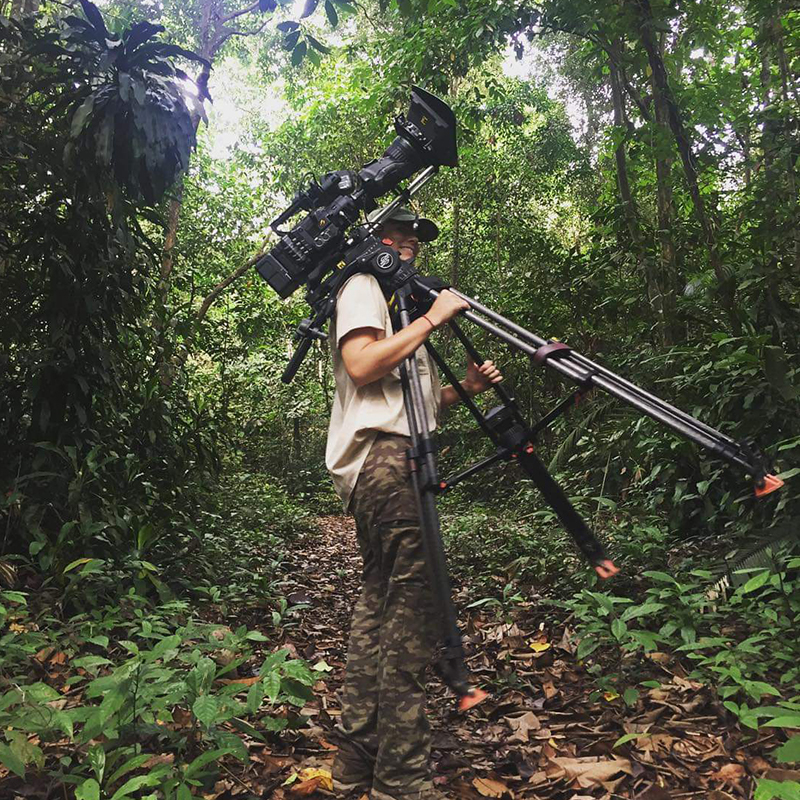
Image courtesy of Claire Clements
I asked Claire if there was a secret formula to her documentaries and she revealed that the core of it lies in a good story — “you can have lots of beautiful footage, but if you can’t tell a story, then it’s boring.”
Another tip she shared was the importance of engaging with the local community. As someone who’s always curious, Claire took the time to visit places like Sungei Buloh to talk to bird watchers — “they’re a fountain of knowledge!”
“We might be filming something different, but they’ll always call to tell me things like ‘there was a crocodile here’ or ‘do you want to film an owl in my backyard?’”, aiding her captures.
One of her most memorable experiences was when she met this eldery uncle at Bishan who offered to carry her equipment for her. He spotted her from a nearby gym and told her, “I’m going to help you if you like, since it’s kind of like my current workout routine of lifting weights.”
She initially declined at first, but he insisted that it was either he would carry her camera and tripod or go back to the gym anyways. I guess chivalry isn’t dead after all.
Claire also met a leaf blower uncle working at Upper Thomson Nature Park who helped her to find the Raffles Banded Langurs. These heartfelt encounters with locals were moments that stuck with her throughout her documenting journey. “Without them, I wouldn’t have been able to get the shots alone,” she reflects.
Getting injured in the filming process
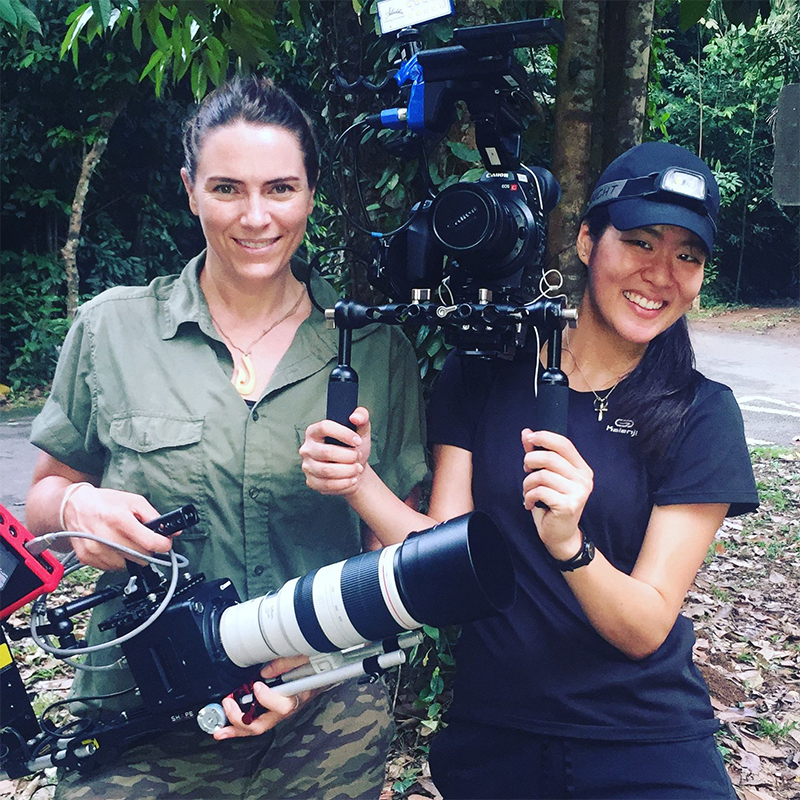
Claire and her second camera operator, Eunice Tan
Image courtesy of Claire Clements
While filming animals can be exhilarating, this job isn’t all rainbows and butterflies either. Claire recalls, “one day while filming in Singapore, my back and my leg were [suddenly] very painful and I ended up having to undergo spinal surgery. That really stopped me from filming for a little while.”
Prior to this incident, she never really had any major health problems over the years.
“Like any physically straining job, be mindful that you are putting your body under a lot of strain”, Claire warns. The truth is, she got injured because she was feeling competitive and was trying to prove herself by carrying the most equipment.
Luckily, Claire had a crew to help her get back on her feet while she was injured, which she felt immensely thankful for. From this wake up call, she now always ensures the welfare of her team is their number one priority. Hey, even Wonder Woman needs her off days too.
Also read:
Travelling Overseas & Therapy Helped This Singaporean Heal From Her Divorce & Find Herself
Secrets about Singapore wildlife
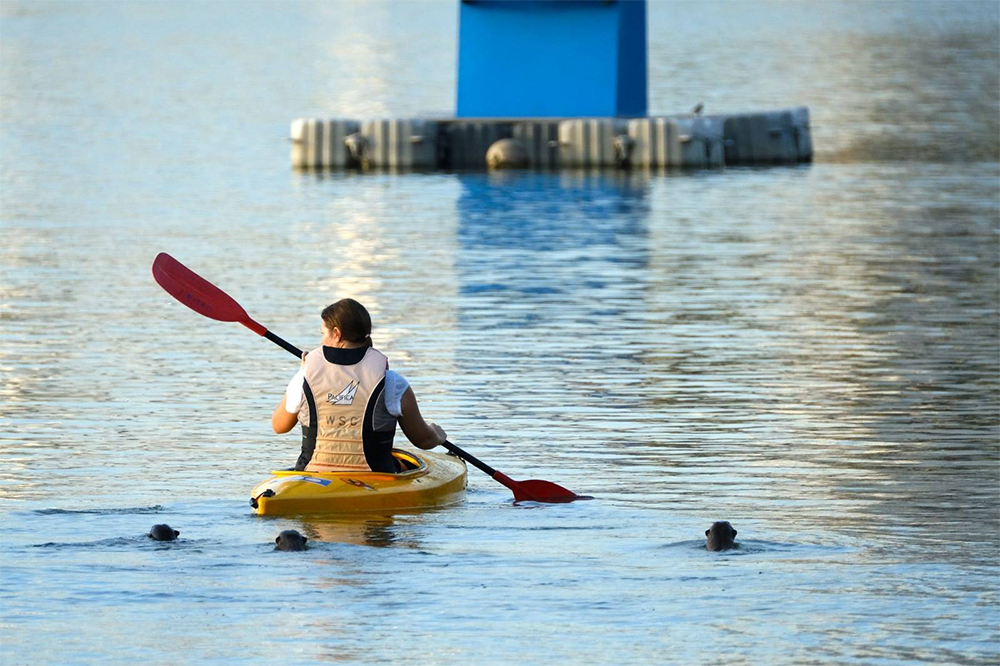
Image courtesy of Claire Clements
Claire admits that having to meet different animals every day together with her crew was what made her job so enjoyable. There are just so many secrets to Singapore wildlife that she wishes to share with everyone through her documentaries. It was then that I felt fortunate to be able to listen to some of these secrets first-hand, which she readily shared with me.
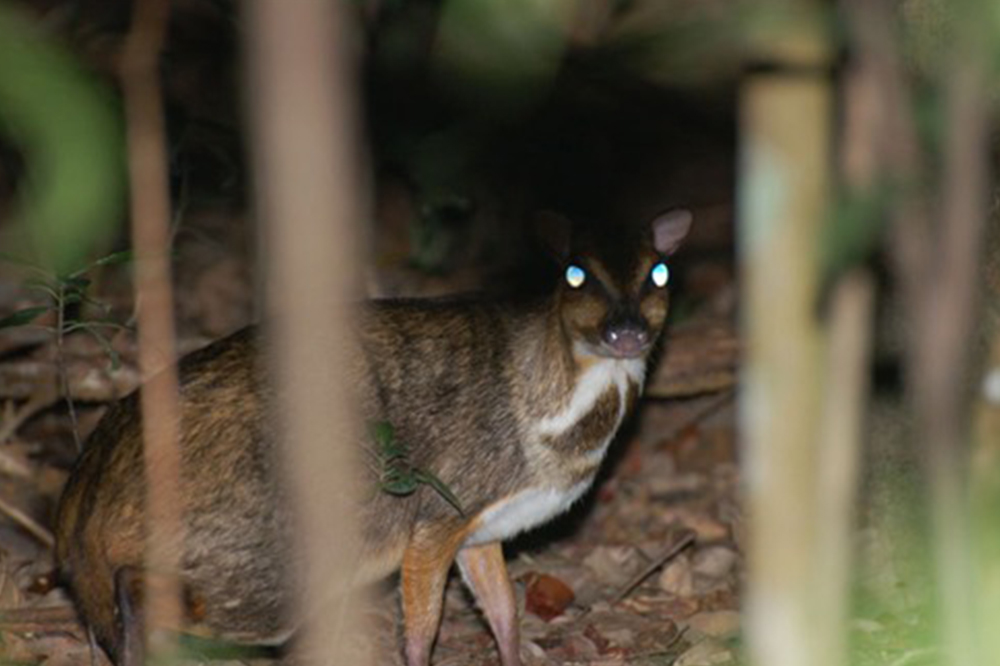
The Greater Mouse-deer, a rare nocturnal animal
Source
While night time animals such as the Greater Mouse-deer looked amazing on camera, it was actually really tough to find them. Claire doesn’t encourage Singaporeans to look for these animals themselves though, since special permission is required. “It’s also very harmful to be shining lights at these nocturnal animals,” she adds.
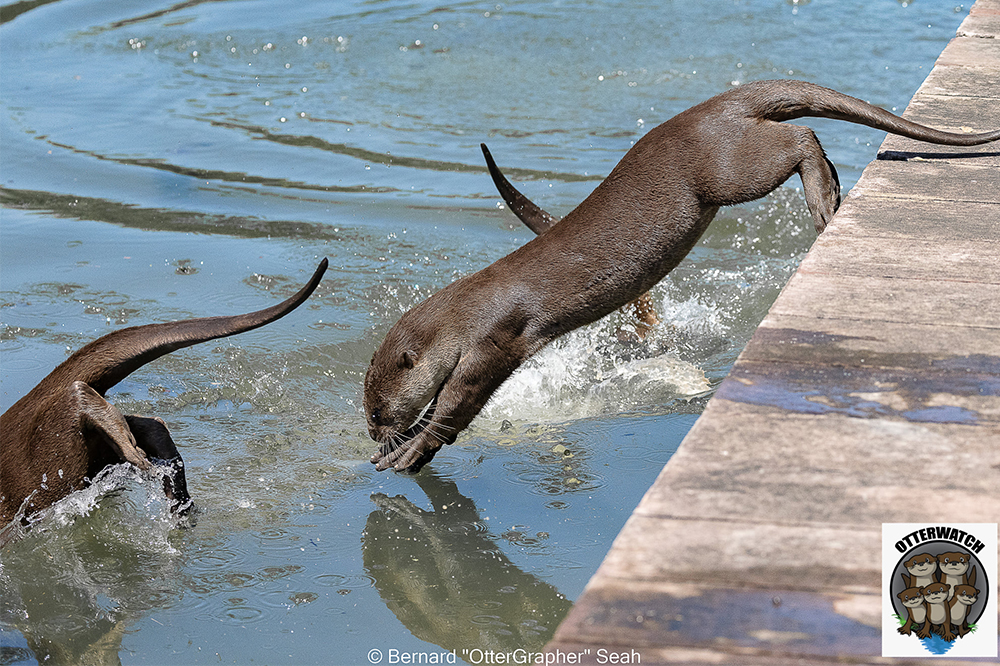
Our beloved Smooth-coated Otters in Singapore
Source
A major behind-the-scenes moment that viewers don’t get to see either is the crazy chase for our beloved otters. Once, she and her camera assistant carried 10kg of equipment and chased them for 14km. Claire could only describe this experience with one word — “tiring”.
These cheeky otters would sometimes slip into the bay and swim to the other side whilst in the middle of filming. This would leave Claire and her crew wondering if they had to run around the whole edge of the bay just to continue filming them.
It was never as easy as it seems on the final product, and the crew could also go on for days on end without spotting any animals at all.
Fun fact: the Smooth-coated Otters were declared locally extinct for a while in the 60s, but the cleaning up of the Singapore River attracted them back again!
Advice to Singaporeans on dealing with wildlife
As we continue to live side-by-side with wildlife and share the urban space with them, it’s not uncommon to see otters swimming in the longkang or wild boars along the road. Though it can be rare and confusing to come across these animals, Claire also shared tips on what to do based on her expertise.
“Firstly, always remember that it is a wild animal, not a tame one. 99.9% of the time they’re not looking to harm you, so leave them alone!” Wild animals are always unpredictable and do things in their own little bubble, so there’s no need to panic or scream.
For those who want to share these animal encounters to the ‘gram, “drop down and lower your body so that they don’t feel threatened, and sometimes the animal might even come closer to you.” This advice made a lot of sense, since I can imagine how terrifying it would be as an otter and a giant human is towering over me with a phone in my face.
“Singapore’s wildlife is more urbanised as compared to other countries, so it’s not their fault if they’re looking out for your food. Don’t feed them or pet them, but appreciate them from a distance and enjoy the experience.”
Advice to fellow budding females in the media industry
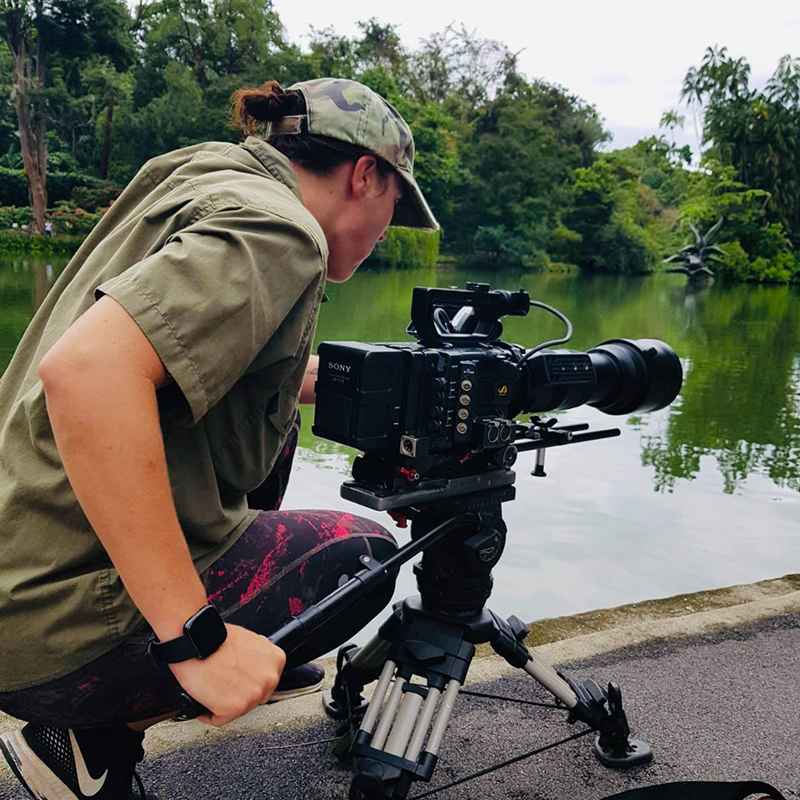
Image courtesy of Claire Clements
As someone who grew up all my life in Singapore, sometimes the Singaporean dream of chasing after straight As and getting a traditional “Asian-approved” job can be quite toxic. Till today, joining the creative industry in Singapore still has parents going “tsk tsk “with the assumption that it isn’t a well-paid role.
However, Claire’s experiences and journey to achieve her dreams are an inspiration to us all. She strongly believes that passion is what drives her forward. When asked what advice she would give to fellow budding females in the media industry, she recommends “seeking out opportunities from companies and taking on internships. Start from the bottom and do everything. Be helpful, be kind, and you’re already conquering half of the struggle.”
Her job as a filmmaker and camerawoman isn’t like your typical 9 to 5 job either. There are “night shoots that last till 6am, physically-draining days and immense pressure to get the shots within a short timeframe.” But Claire sees these as opportunities for learning and growing, where being “passionate and interested” gets your creative engine going.
The high level of time commitment can be a big challenge for women as well. “If you’re a female with kids or who want to have children, you have to keep in mind that you might have to leave them behind for shoots that can go up to 3 months long,” she notes.
Future filmmaking plans and return to Singapore
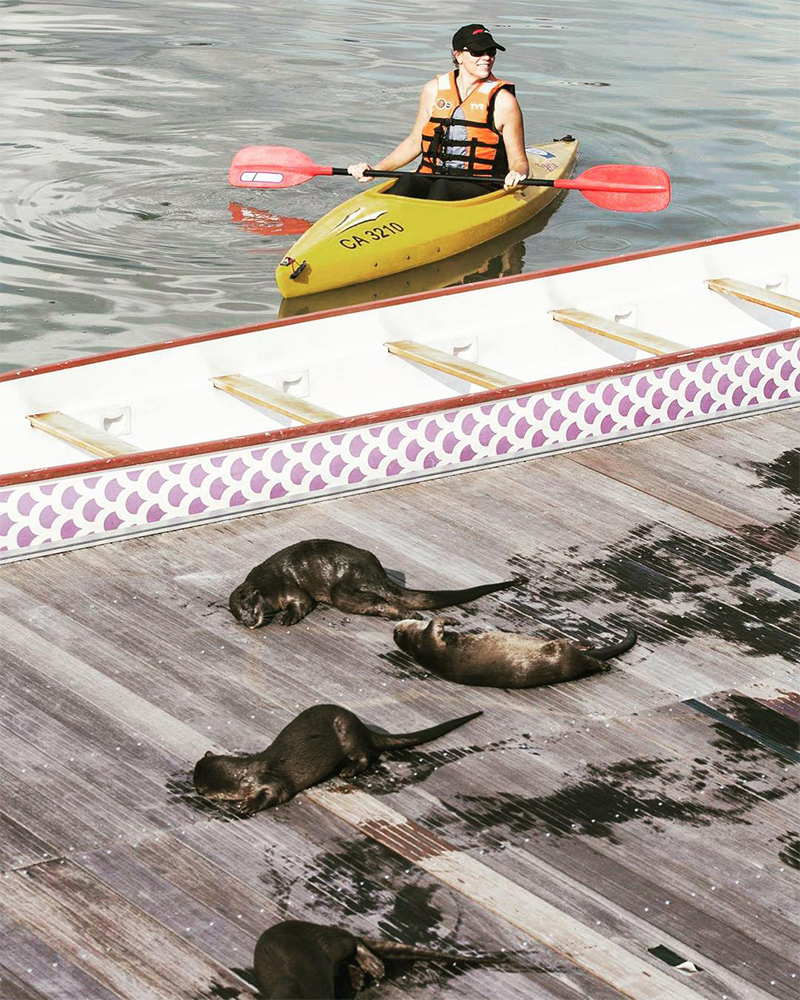
Claire with the ever-mischievous otters in Singapore
Image courtesy of Claire Clements
Like most of us adjusting to the new normal of WFH, Claire herself is working from home in Tasmania, Australia, while also recovering her back. Though there’s a 2-hour time difference with Singapore, she’s glad that her company and crew can make this WFH experience fuss-free.
While she does feel lonely sometimes and misses being out in the field, she promises that “she’ll be back [in Singapore] as soon as the Australian borders can open up” to follow her passion once again.
Moving around the world for at least 10 to 15 years of her life, Claire feels that it has taken its toll on her physically and mentally – so she doesn’t mind working in Singapore while staying in Australia as an alternative.
As for what’s to come next in this go-getter’s journey? Claire reveals her next to-do is a big film — something she has always dreamt of pursuing and hopes she can do more of.
Creating Singapore’s First Wildlife Documentary Wild City
Whether we’re chasing our dreams to be a filmmaker like Claire or doing something in an entirely different industry, Claire’s passion and love for her work is truly inspiring. From carrying heavy equipment to dealing with gender stereotypes, Claire has shown us that the pursuit of success isn’t always a smooth-sailing one.
However, rewards always come in a variety of different forms. One of them, Claire shared, was when a senior who she worked with cried while watching the screening of her documentary. He told her that the visuals made him realise what he spent all this time for, and they were proud to be able to share these untold wildlife stories to Singaporeans.
If you want to check out the Wild City series, head over to Netflix or Channel News Asia to learn more about Singapore’s amazing wildlife brought to the screen. For more documentaries by Claire, such as a feature on the Otter Town for National Geographic, check out Claire Clements’ website for more details.
Cover: Images courtesy of Claire Clements.
Also read:
Coming Out As LGBTQ+ — What It’s Like Facing Family Disapproval As Shared By A Singaporean

